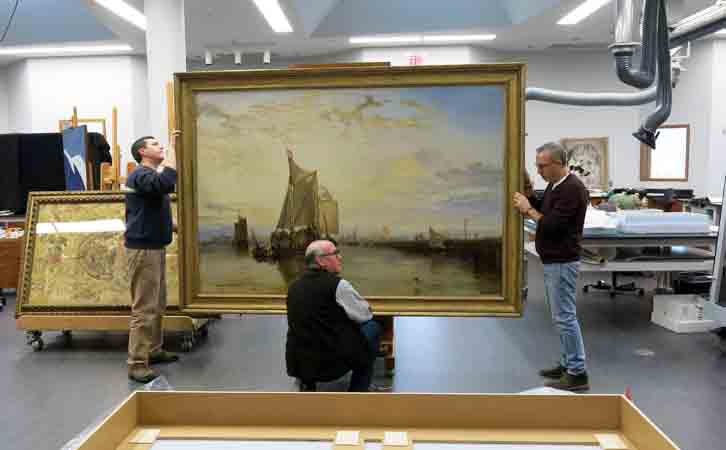
Yale Center for British Art
A new course this semester in the School of Engineering & Applied Science aims to bridge the worlds of art and engineering.
In “The Materials Science of Art,” which consists of weekly lectures and labs, students examine the ways artists employ different materials and then think about their work. The 26 students enrolled not only gain an understanding of scientific principles ranging from chemistry and fluid dynamics to structural mechanics, but also develop an appreciation of the artist as an engineer and a pioneer, said Paul Whitmore, a director at the Institute for the Preservation of Cultural Heritage at West Campus and a co-lecturer of the course.
“An object of art is something that you engage with in an emotional sense — I don’t want to replace that, but I want to supplement that with some appreciation that this really is a material object that someone crafted with real invention and forethought and bequeathed to the world,” Whitmore said.
“The Materials of Science of Art” was born from discussions between Whitmore and Dean of the engineering school T. Kyle Vanderlick who sensed that his work combined the humanities and sciences in a unique way and asked him to consider teaching a class in the engineering.
The course centers on the creative process, casting artists as engineers who try to build something to works in the way they intend, Whitmore said. The materials choices artists make and the way they manipulate materials all constitute engineering practices, he explained.
The course lectures began with an exploration of color and the ways that artists control and manipulate it. To apply scientific principles they had learned, students studied the gradual fading of a series of paintings by the American artist Mark Rothko, then developed a method that could project colored light onto his faded paintings to make them look closer to their original appearances.
“‘Restoring’ faded paint swatches using only lighting design has been the coolest hands-on experience in this class,” said ECR Chen ’20, a student in the course.
The next unit focused on photography, detailing the chemical principles behind early photographs in 19th-century Britain. By recreating the photographs, the students better understood why and how photographs created during early stages of the technology quickly faded, Whitmore said.
The students in the course range from undecided first years to upper-level political science, economics and religious studies majors.
“This is the spirit of ‘Y-shaped’ engineers,” said Katherine Schilling, a scientist at the IPCH and a co-lecturer of the course. “It’s just so magical to see the students from all different majors enjoying the things that we’ve planned.”
Upcoming course units will focus on Jackson Pollock’s use of fluid paints and the structural properties of materials like stone and glass. This latter unit will culminate in a lab experiment in which students will recreate the structural instability in Michelangelo’s David statue and perform mechanical property testing and computer simulations to analyze its cracks.
“This class has been vindication for Kyle and her vision that this course is what she thought it would be,” said Whitmore, referring to the engineering school dean. “The subject is this perfect marriage of things that you want to expose students to, and Yale students recognize that: A science class aimed at art has appeal.”
Amy Xiong | amy.xiong@yale.edu







